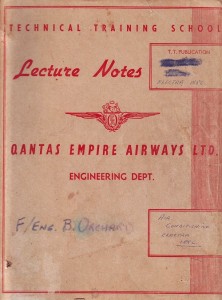In-line shaft dyno
The other day I bought some manuals published in July 1960. They’re lecture notes from the Technical Training School for Qantas Empire Airways Ltd.
The notes are primarily on the Lockheed Electra, an aircraft powered by four Allison 501-D13 prop jet engines. These engines each developed about 4000hp.
One of the very interesting technologies covered in the manuals is a real-time, on-board dyno. Yes, in the cockpit was a gauge that displayed the power being produced by the engine! This gauge was calibrated from minus 1000hp to plus 6000hp. Accuracy was quoted as being +/- 355hp.
So how was a real-time indication of power output gained?
On this turbo prop design – as with all turbo props that I’m aware of – a gearbox is used to reduce the speed of the turbine to that suitable for driving a propeller. The turbine is joined to the reduction gearbox by means of a driveshaft, splined each end. Surrounding this shaft is another shaft, this one splined only at the turbine end.
- » Continue reading or Comments (12)

 Julian Edgar, 50, has been writing about car modification and automotive technology for nearly 25 years. He has owned cars with two, three, four, five, six and eight cylinders; single turbo, twin turbo, supercharged, diesel and hybrid electric drivelines. He lists his transport interests as turbocharging, aerodynamics, suspension design and human-powered vehicles.
Julian Edgar, 50, has been writing about car modification and automotive technology for nearly 25 years. He has owned cars with two, three, four, five, six and eight cylinders; single turbo, twin turbo, supercharged, diesel and hybrid electric drivelines. He lists his transport interests as turbocharging, aerodynamics, suspension design and human-powered vehicles.




